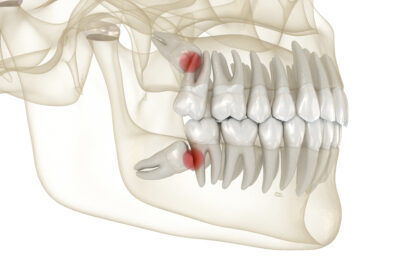Pop quiz: Do you know where your third molars are located? If you’re drawing a blank, you’re not alone. You may not be familiar with the term “third molar” but rather know these teeth as your wisdom teeth. These terms are interchangeable. What are third molars and why do we have them? Third molars emerge in the back of our mouths in our late teen years, though some people never grow them at all. Depending on their positioning, you may need to have yours removed. More than 5 million people have their third molars removed each year.
What Are Third Molars?
A molar is a grinding tooth at the back of our mouths. Humans typically have first and second molars in each quadrant: upper right, upper left, lower right, and lower left. A third molar, the last in line at the very back of our mouths, often emerges through the gum tissue around the age of 17, if at all. Some patients have third molars that remain in the gum tissue, beneath the surface, while others do not develop third molars at all.
Why Do We Have Third Molars?
Human’s early ancestors had a diet very different from the diet humans have today. Our third molars may have been necessary for the extra grinding power needed to eat a diet of tough food, such as nuts, roots, meat and leaves, according to anthropologists. Today, we have utensils to assist us with our eating, plus our modern diet is much softer and easier on our teeth, so third molars are no longer necessary. Third molars are classified as vestigial organs by evolutionary biologists, meaning they are body parts that have lost their function as a result of human evolution.
When Do Third Molars Develop?
As we continue to evolve as humans, it is not out of the ordinary to never develop third molars at all. For those that do have third molars, they typically erupt through the gum tissue to surface above the gum line by the age of 17. Many patients undergo wisdom teeth extraction to prevent crowding and misalignment.














